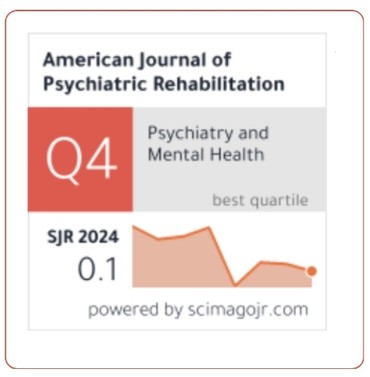“Impact Of Mobility On Participation Restriction In Individuals With Spinal Cord Injury”
DOI:
https://doi.org/10.69980/ajpr.v28i5.308Keywords:
Traumatic Spinal cord injury, Mobility, Participation, Barriers, QOLAbstract
Background And Objective: Traumatic Spinal Cord Injury is considered as a major disability and also life threatening condition that carries a high risk of morbidity and mortality also face challenge in the in social participation once they enter the community due to which quality of life of an individual with SCI is affected. It is essential to understand how people with SCI live with the overall physical, social and attitudinal environment in which they experience their day-to-day lives and many factors acts either as barrier or facilitator to the person with SCI. Mobility whether independent or supported by assistive devices is a vital aspect of functional autonomy and plays a key role in enabling individuals to participate in society. (1) Therefore, this study aimed to identify the factors influencing mobility related participation restrictions in individuals with spinal cord injury.
Study Design: A cross sectional study.
Materials and Methods: Details of patients with traumatic spinal cord injury were collected from KLE Hubli co-operative hospital, Rehab centers in and around Hubballi, Karnataka and a total of 30 individuals were interviewed face-to-face using the CHART-SF questionnaire, administered in the local vernacular language. Responses were recorded and scored according to the CHART-SF manual guidelines.
Results: Descriptive analysis was used for finding mean, median an standard deviation and the median scores for the CHART-SF Mobility domain was 14 severe handicap, All statistics were done with SPSS version 26.0. A probability value of p ≤ 0.05 was considered to indicate a significant difference.
Conclusion: Thus, there is a strong need to focus on planning the better rehabilitation and awareness programs for the betterment of quality of life of people with SCI highlighting on major aspects/factors affected under domain mobility, in and around Huballi.
References
1. Ambrosio F, Boninger ML, Fitzgerald S, Liu B, Mapa M, Collins DM. Mobility device as a determinant of social participation in persons with multiple sclerosis. Technology and Disability. 2003;15(4):211–8.
2. Sezer N, Akkuş S, Uğurlu FG. Chronic complications of spinal cord injury. World journal of orthopedics. 2015 Jan 18;6(1):24.
3. Mulla S, Upadhyaya N, Shetkar S, Sanap A. Factors affecting social participation restriction in individuals with spinal cord injury. Journal of medical pharmaceutical and allied sciences. 1882 May;11(3).
4. World Health Organization. International Classification of Functioning, Disability, and Health: Children & Youth Version: ICF-CY. World Health Organization; 2007.
5. Cao Y, Walker EA, Krause JS. Environmental barriers and subjective health among people with chronic spinal cord injury: a cohort study. The Journal of Spinal Cord Medicine. 2015 Jul 1;38(4):526-31.
6. Schneidert M, Hurst R, Miller J, Üstün B. The role of environment in the International Classification of Functioning, Disability and Health (ICF). Disability and rehabilitation. 2003 Jan 1;25(11-12):588-95.
7. World Health Organization, UNESCO, International Labour Organization, & International Disability and Development Consortium. Community-based rehabilitation: CBR guidelines. Geneva: World Health Organization; 2010. Available from: https://iris.who.int/handle/10665/44405.
8. Whiteneck GG, Charlifue SW, Gerhart KA, Overholser JD, Richardson GN. Quantifying handicap: a new measure of long-term rehabilitation outcomes. Arch Phys Med Rehabil. 1992;73(6):519–26. doi:10.1016/0003-9993(92)90094-4.
9. Mohan M, Deb R. Barriers and facilitators during community reintegration of people with spinal cord injury: a qualitative study. Journal of caring sciences. 2023 Dec 30;13(1):44.
10. Mittal N, Bhandari M, Kumbhare D. Are Corticosteroid Injections Safe to Inject into Knees With Osteoarthritis?: What Are the Long-term Effects?. American Journal of Physical Medicine & Rehabilitation. 2018 Jun 1;97(6):461-4.
11. Scivoletto, G., et al. (2008). Functional recovery after spinal cord injury: what factors are important? Spinal Cord, 46(7), 517–523.
12. Chhabra, H. S., et al. (2015). Spinal cord injury in India: an epidemiological study. Spinal Cord, 53(5), 365–370.
13. Singh, R., & Prabhakar, S. (2020). Gender differences in outcomes after spinal cord injury: An Indian perspective. Journal of Neurosciences in Rural Practice, 11(1), 32–37.
14. Kirshblum, S. C., et al. (2011). International standards for neurological classification of spinal cord injury. The Journal of Spinal Cord Medicine, 34(6), 535–546.
15. Post, M. W., & van Leeuwen, C. M. (2012). Psychosocial issues in spinal cord injury: a review. Spinal Cord, 50(5), 382–389.
16. Widerström-Noga, E., & Craig, A. (2016). The psychosocial impact of pain in spinal cord injury. Spinal Cord, 54(10), 777–782.
17. Middendorp, J. J., et al. (2016). Technology and spinal cord injury rehabilitation: a review of the state-of-the-art and future directions. Spinal Cord, 54(12), 1033–1041.
Downloads
Published
Issue
Section
License
Copyright (c) 2025 American Journal of Psychiatric Rehabilitation

This work is licensed under a Creative Commons Attribution 4.0 International License.
This is an Open Access article distributed under the terms of the Creative Commons Attribution 4.0 International License permitting all use, distribution, and reproduction in any medium, provided the work is properly cited.









